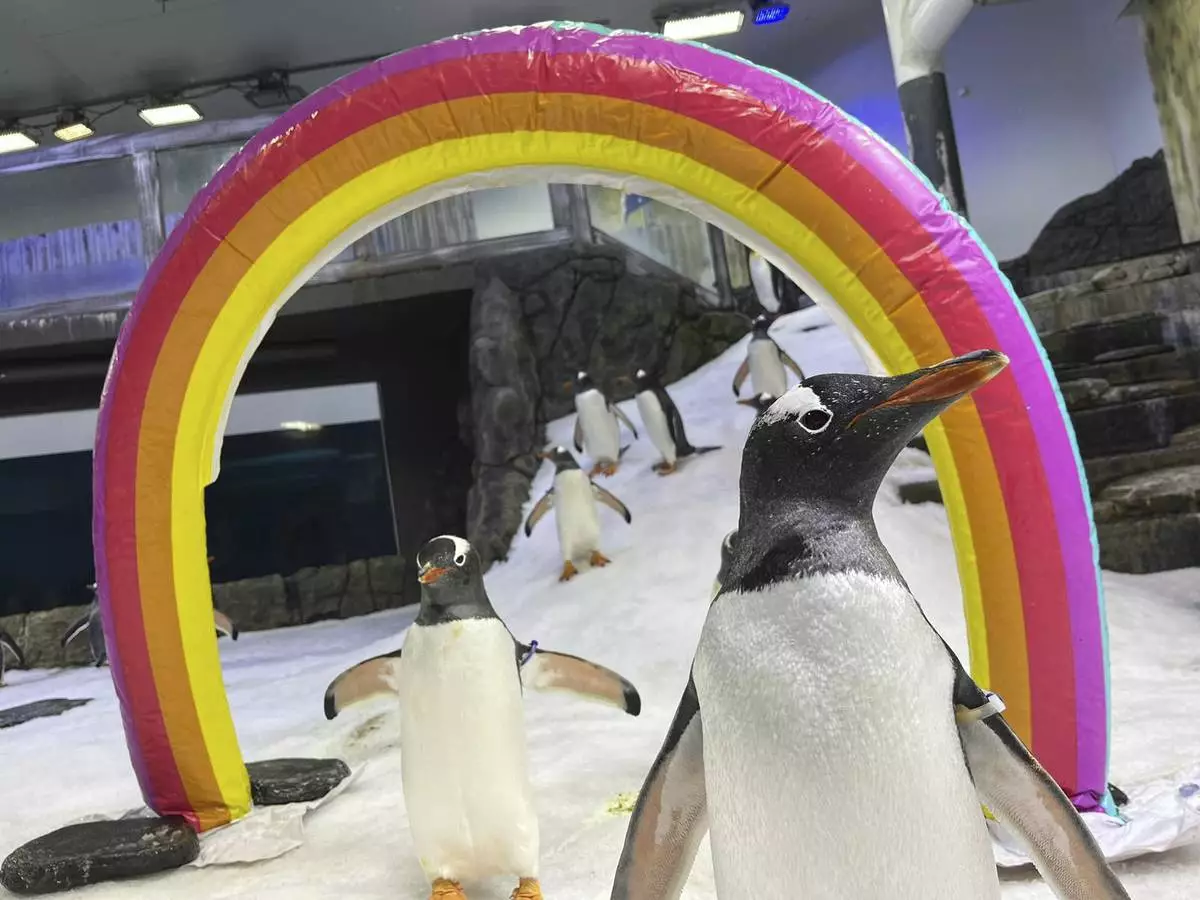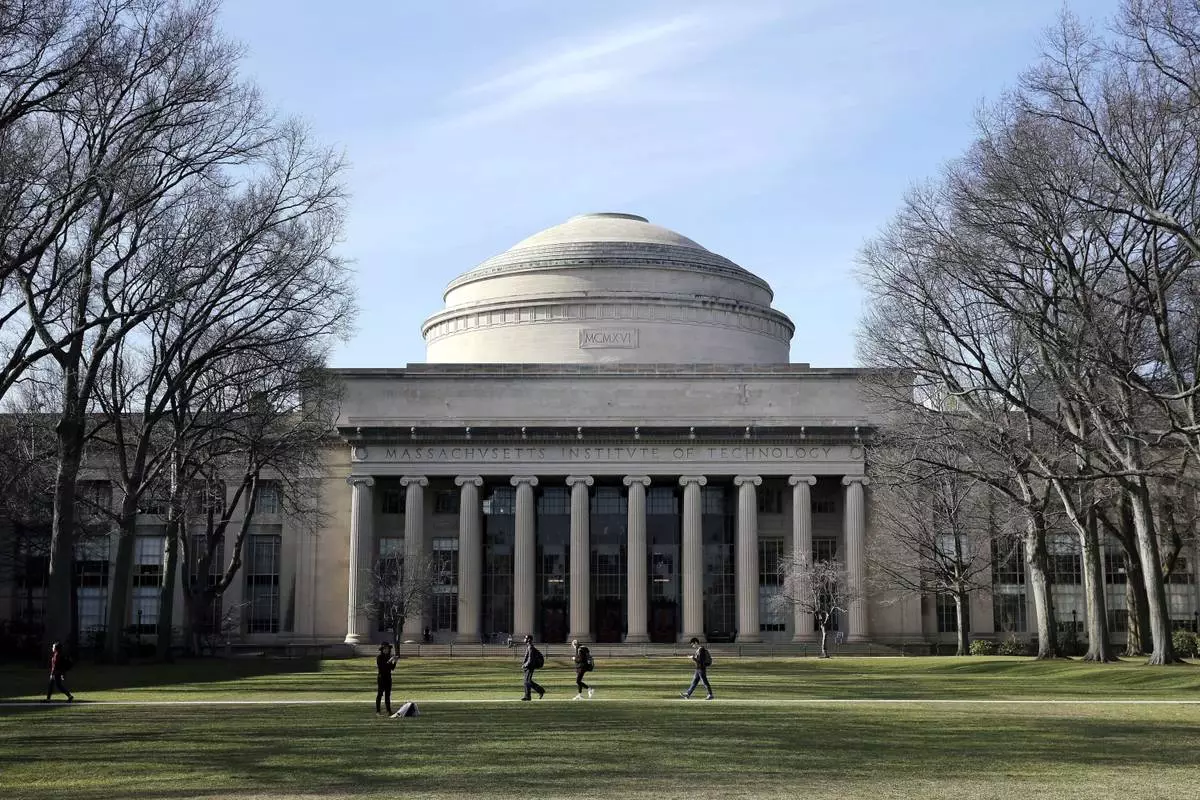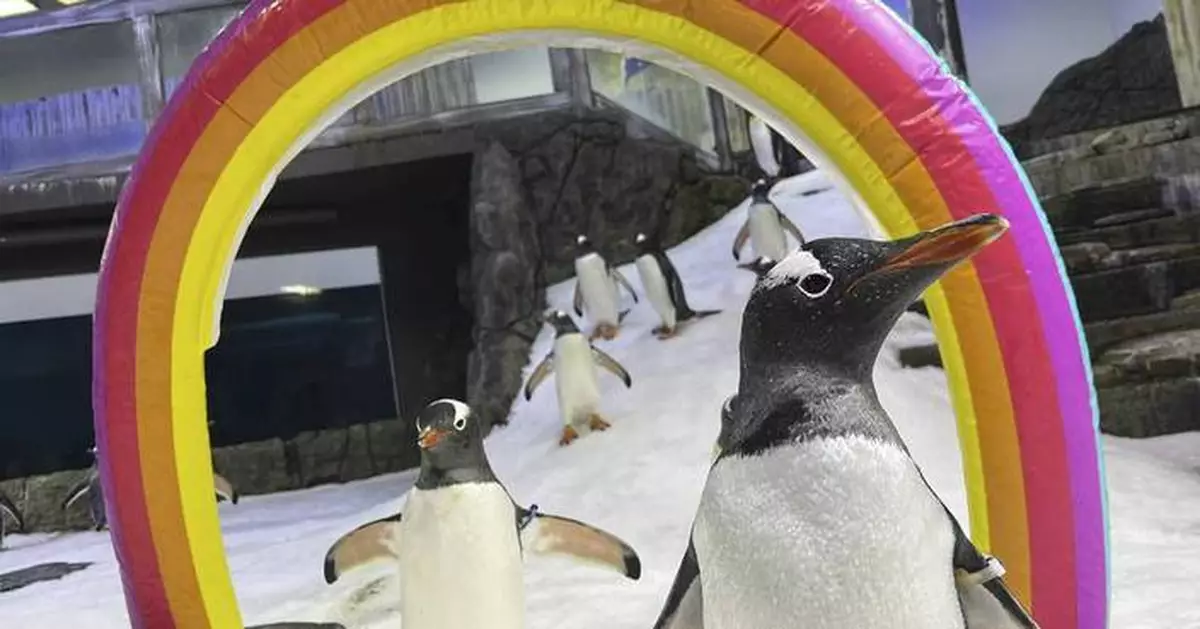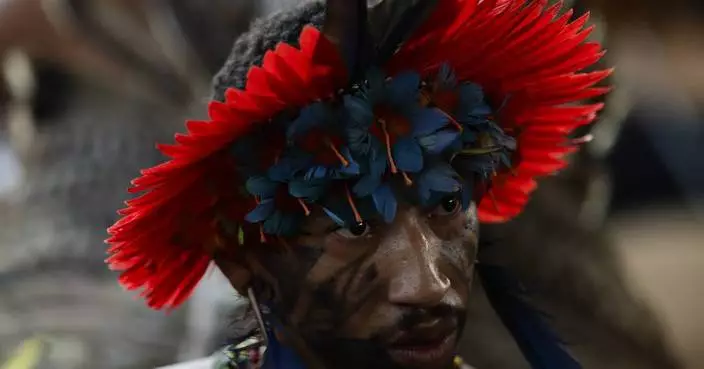MELBOURNE, Australia (AP) — Sphen, the elder partner in a world famous same-sex penguin couple celebrated in Australian schoolbooks and an annual gay rights parade, has died at 11 years old, a Sydney aquarium said on Thursday.
Sphen and his male gentoo penguin partner Magic, now aged 8, came to international attention in 2018 when they built a pebble nest together in the hope of raising chicks at their home in the Sea Life Sydney Aquarium.
International interest grew as they adopted and successfully raised two chicks in 2018 and 2020. Their union was celebrated by a float in the Sydney Gay and Lesbian Mardi Gras, included in the Sydney-based New South Wales state education curriculum and discussed in the Netflix series “Atypical.” Their relationship has also been recorded in books and film documentaries.
Penguin mates share their parenting duties and same-sex couples in captivity have occasionally adopted eggs before.
The aquarium said in a statement Sphen died this month. It did not say when the penguin had died or reveal a cause of death. The species' average life span is 12 to 13 years, the aquarium said.
Aquarium general manager Richard Dilly described Sphen as an “icon” that had made a positive impact on the world through his unique relationship with Magic.
“Sphen and Magic’s love story captivated the world and it’s been an honor to welcome local and international fans, some of which traveled long distances to see them in real life,” Dilly said.
“Sphen and Magic shared a bond unlike most other penguin couples – they could even be found together outside of the breeding season, which is unique for gentoo penguins,” Dilly added.
Animal carers took Magic to see his partner’s body to help it understand that they will not be together the next breeding season.
“The moment we showed him (Magic) to Sphen, he started singing, and then the other penguins also joined in, singing with him. So it was very touching,” aquarium supervisor Renee Howell said.
“I don’t think there was a dry eye in the penguin exhibit in that moment,” Howell added.

In this undated photo provided by the Merlin Entertainments Group, gentoo penguins Sphen, right, and Magic, left, walk under a rainbow arch at the SEA LIFE Sydney Aquarium in Sydney, Australia. (Merlin Entertainments Group via AP)
BOSTON (AP) — A study that explores the feasibility of using pigeons to guide missiles and one that looks at the swimming abilities of dead fish were among the winners Thursday of this year’s Ig Nobels, the prize for comical scientific achievement.
Held less than a month before the actual Nobel Prizes are announced, the 34th annual Ig Nobel prize ceremony at the Massachusetts Institute of Technology was organized by the Annals of Improbable Research magazine’s website to make people laugh and think. Winners received a transparent box containing historic items related to Murphy’s Law — the theme of the night — and a nearly worthless Zimbabwean $10 trillion bill. Actual Nobel laureates handed the winners their prizes.
“While some politicians were trying to make sensible things sound crazy, scientists discovered some crazy-sounding things that make a lot of sense,” Marc Abrahams, master of ceremonies and editor of the magazine, said in an e-mail interview.
The ceremony started with Kees Moliker, winner of 2003 Ig Noble for biology, giving out safety instructions. His prize was for a study that documented the existence of homosexual necrophilia in mallard ducks.
“This is the duck,” he said, holding up a duck. “This is the dead one.”
After that, someone came on stage wearing a yellow target on their chest and a plastic face mask. Soon, they were inundated with people in the audience throwing paper airplanes at them.
Then, the awards began — several dry presentations which were interrupted by a girl coming on stage and repeatedly yelling “Please stop. I'm bored.” The awards ceremony was also was broken up by an international song competition inspired by Murphy's Law, including one about coleslaw and another about the legal system.
The winners were honored in 10 categories, including for peace and anatomy. Among them were scientists who showed a vine from Chile imitates the shapes of artificial plants nearby and another study that examined whether the hair on people's heads in the Northern Hemisphere swirled in the same direction as someone's hair in the Southern Hemisphere.
Other winners include a group of scientists who showed that fake medicine that causes side effects can be more effective than fake medicine that doesn't cause side effects and one showing that some mammals are cable of breathing through their anus — winners who came on stage wearing a fish-inspired hats.
Julie Skinner Vargas accepted the peace prize on behalf of her late father B.F. Skinner, who wrote the pigeon-missile study. Skinner Vargas is also the head of the B.F. Skinner Foundation.
“I want to thank you for finally acknowledging his most important contribution,” she said. “Thank you for putting the record straight.”
James Liao, a biology professor at the University of Florida, accepted the physics prize for his study demonstrating and explaining the swimming abilities of a dead trout.
“I discovered that a live fish moved more than a dead fish but not by much,” Liao said, holding up a fake fish. “A dead trout towed behind a stick also flaps its tail to the beat of the current like a live fish surfing on swirling eddies, recapturing the energy in its environment. A dead fish does live fish things.”

Professor James Liao displays a stuffed fish while accepting a prize for physics for demonstrating and explaining the swimming abilities of a dead trout during a performance at the Ig Nobel Prize ceremony at Massachusetts Institute of Technology in Cambridge, Mass., Thursday, Sept. 12, 2024. (AP Photo/Steven Senne)

A team of researchers perform a demonstration during a performance showing that many mammals are capable of breathing through their anus while accepting the 2024 Ig Nobel prize in physiology at the Ig Nobel Prize ceremony at Massachusetts Institute of Technology, in Cambridge, Mass., Thursday, Sept. 12, 2024. (AP Photo/Steven Senne)

People in the audience throw paper airplanes toward the stage during a performance at the Ig Nobel Prize ceremony at Massachusetts Institute of Technology in Cambridge, Mass., Thursday, Sept. 12, 2024. (AP Photo/Steven Senne)

FILE - Students walk past the "Great Dome" atop Building 10 on the Massachusetts Institute of Technology campus in Cambridge, Mass, April 3, 2017. (AP Photo/Charles Krupa, File)














